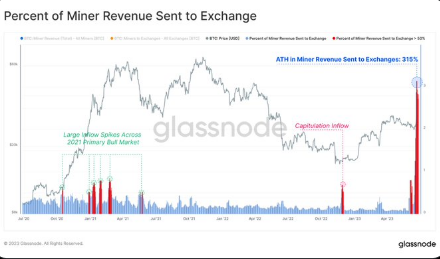[ad_1]
In the world of Bitcoin mining, the idea of decentralization versus centralization has been a topic of ongoing debate.
Recent information from Hash Index has shed new mild on this dialogue by revealing that public miners make up simply 28% of Bitcoin’s global hash rate. This statistic challenges the notion that miners maintain central management over the community, emphasizing the pivotal position of nodes in the ecosystem.
While this information showcases the affect of public miners, it’s essential to acknowledge that potential centralization factors nonetheless exist inside mining swimming pools. Approximately 70% of the community’s hash price is pushed by personal entities, as reported by Hashrate Index.
According to @hashindex, public miners are 28% of #Bitcoin‘s international hashrate.
The trade is evolving, with public co’s and nation-states now integrally concerned. This presents alternatives & challenges to the community.
1/ pic.twitter.com/S6bFNTknMO— Jamie Coutts CMT (@Jamie1Coutts) September 27, 2023
Mining Pools And Decentralization
Decentralization, in the context of crypto mining, refers back to the distribution of computational energy and decision-making throughout a various community of members. When discussing mining swimming pools, decentralization turns into a essential concern. Mining swimming pools are teams of miners who mix their computational assets to extend their possibilities of efficiently mining a Bitcoin block.
However, the concentration of hash power inside these swimming pools can doubtlessly introduce centralization. A couple of dominant swimming pools might exert important affect over the community, which might elevate issues about safety and censorship resistance.
No shock to study that Western nations, those main the #energytransition – Australia, West & Nth Europe, UK & US – are priced out. In Italy Bitcoin would wish to rise to over $200,000 to even break even.
— Jamie Coutts CMT (@Jamie1Coutts) September 27, 2023
To keep decentralization, it’s important to have a steadiness between public miners (people or small teams) and personal entities throughout the mining ecosystem.
This variety ensures that energy and management are dispersed, lowering the chance of a single entity or group manipulating the community. In the broader context of Bitcoin, decentralization is a basic precept that enhances safety, resilience, and the trustworthiness of the community.
Bitcoin (BTC) is at the moment buying and selling at $27.012. Chart: TradingView.com
Texas Emerges As A Dominant Bitcoin Mining Hub
Beyond the talk over decentralization, regional developments in Bitcoin mining are making waves. Texas, in specific, has solidified its place as a dominant power in the worldwide Bitcoin mining panorama, accounting for over 28% of all Bitcoin hash price in the United States. This rise to prominence is attributed to a number of favorable components, together with reasonably priced power costs and a regulatory surroundings that welcomes cryptocurrency mining.
Data from Foundry USA cited in a report reveals the up to date Hashrate Map, which unmistakably topped Texas because the chief in Bitcoin hash price throughout the United States. The Lone Star State now boasts a considerable 28.5% share of the nation’s whole hash price. In comparability, Georgia claims 9.64% of the hash price, whereas New York and New Hampshire contribute 8.75% and 5.33%, respectively.

This concentration of mining power in Texas highlights the state’s attraction to miners, because of its mixture of aggressive power prices and a regulatory framework that accommodates the trade’s wants.
As Bitcoin mining continues to evolve, regional dynamics and the steadiness between private and non-private participation will stay key facets to observe, shaping the way forward for this decentralized digital forex.
Featured picture from iStock
[ad_2]
Source link



